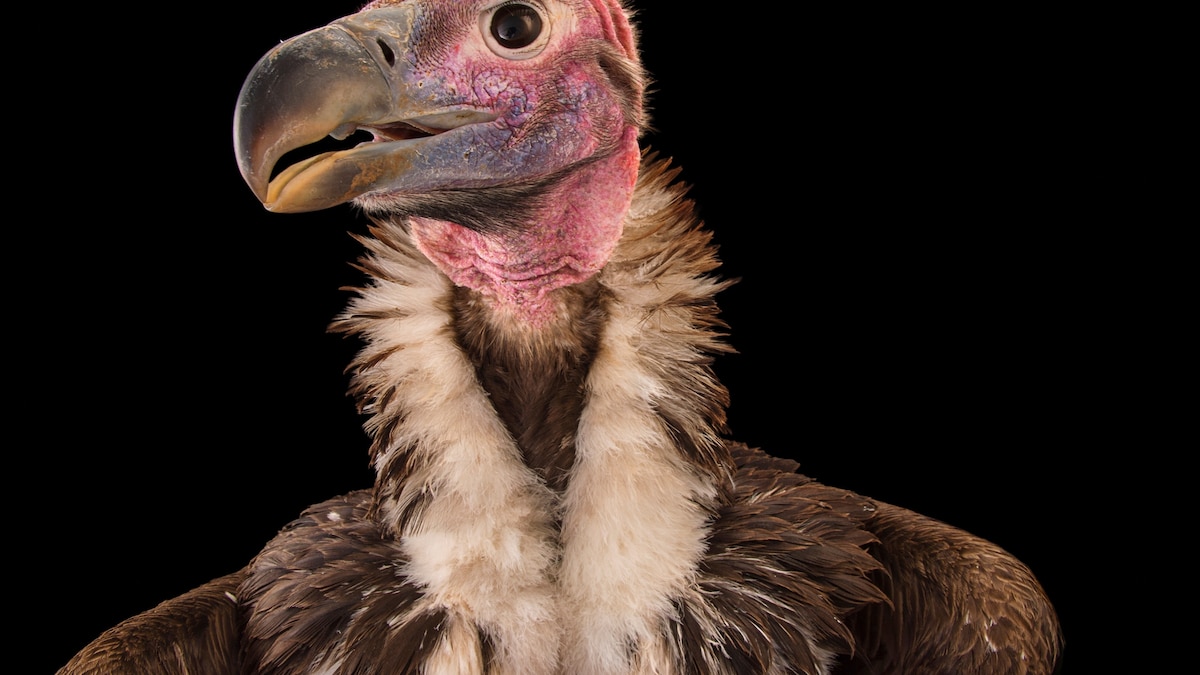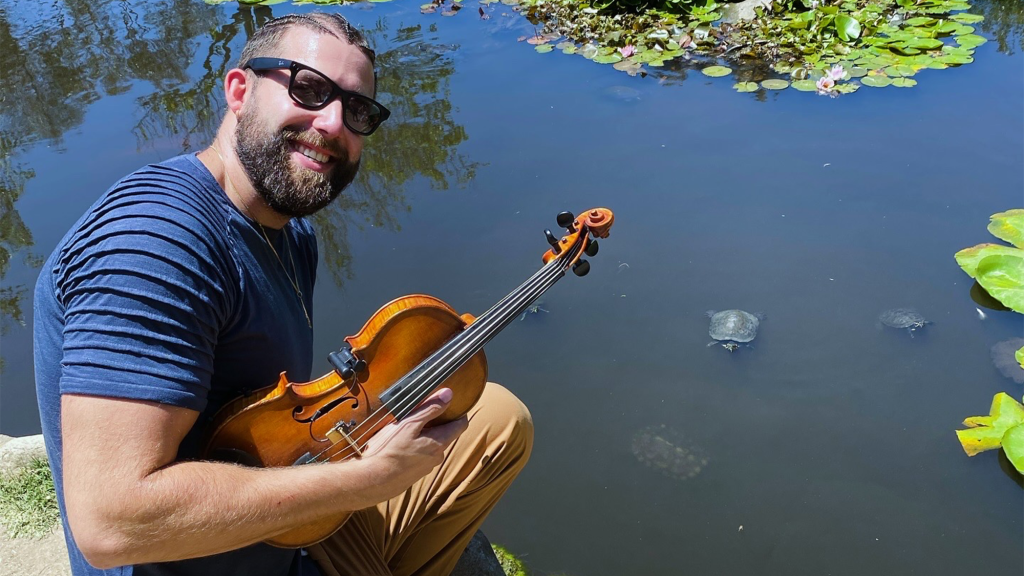Now Reading: The astonishing superpowers of nature’s most unloved animals
-
01
The astonishing superpowers of nature’s most unloved animals
The astonishing superpowers of nature’s most unloved animals

The vulture has to be one of the most reviled creatures on Earth. The very word “vulture” is an insult—a synonym for a greedy exploiter. In a way, vultures’ bad reputation is understandable. For starters, they are neither cute nor cuddly, what with their stooped posture, bare heads, and beady eyes. They spend their days eating dead animals—and they do it in a stomach-churning way, by entering the corpse at its soft parts such as the mouth, nose, or anus.
“Vultures definitely have an image problem,” says National Geographic Explorer Darcy Ogada, Africa program director at the conservation nonprofit Peregrine Fund, who points out that a bald bird sticking its beak up the rear end of a wildebeest wouldn’t make for the most appealing magazine cover.
The birds’ PR problem has real-world consequences. It causes us to overlook the vultures’ fascinating behavior and vital role in our ecosystem. Without vultures, bad things happen. These birds act as nature’s cleaners, hoovering up rotting carcasses and preventing the spread of disease.
(Africa’s vultures are disappearing. A series of disasters could follow.)
Consider the drastic situation in India. Starting three decades ago, vultures nearly disappeared after millions of them were accidentally poisoned by medicine used on cows, which turned out to be toxic to vultures. As a result, the countryside became littered with rotting, germ-filled animal corpses that infected the rivers and drinking water—and also boosted the population of rabies-carrying feral dogs. According to a recent study in the American Economic Review, the decline in vultures correlated with more than half a million excess human deaths in a population sample in India between 2000 and 2005.
In an ideal world, the disappearing vulture population would be a conservation priority. But it isn’t. The vast majority of global conservation money goes to a few top species, usually large animals such as rhinos, elephants, and gorillas. “The rest of conservation gets the scraps,” Ogada says. The animals fighting over those crumbs are what you might call the D-list species. The outcasts. We’re talking about the vultures, the naked mole rats, and the proboscis monkeys with their pendulous blobby schnozzes. They’re not pretty. They’re not colorful. They often do gross things, such as eating feces, a habit of the naked mole rat.
They are the polar opposites of the conservation icons: the lions, pandas, penguins, and giraffes that star in nature documentaries, appear on our cereal boxes, and get the lead roles in animated movies. Conservationists call the A-listers charismatic megafauna or flagship species. Several studies show that they get a lopsided share of donations. As one study puts it, “Animal charisma trumps endangered status.” Just one example: Amphibians account for about 25 percent of threatened vertebrate species, but get only 2.5 percent of funding. No one wants to kiss or donate to a slimy frog.
(How does the Endangered Species Act protect animals at risk?)
What does it take to be a Very Important Animal? It helps if you’re cute, furry, jumbo size, and/or adorned with attention-grabbing outerwear—think the interesting patterns of leopards and zebras.
Cuteness is an especially powerful draw, thanks to our brain’s programming. “What we find is cute in animals is often the same things we find cute in human babies, such as big, forward-facing eyes,” says Gabby Salazar, an environmental social scientist and National Geographic Explorer. We’re genetically designed to love and nurture babies, and babyish animals such as the panda (which appears on the WWF logo) reap the benefits.
Being on the A-list comes with yet another benefit, what psychologists call the halo effect. This means that we mistakenly imbue attractive people and animals with additional positive characteristics, such as moral goodness. It’s why so many movie heroes are equipped with gleaming teeth and chiseled jaws and so many villains have scars.
But in reality, both with humans and animals, prettiness doesn’t equal benevolence or courage, and neither does ugliness equal nastiness or cowardice. Just look at the toucan. “I love toucans, but they don’t just use that beak to eat fruit,” says Salazar. “They also use that beak to scoop up baby birds from other birds’ nests.” Not something you’d see Toucan Sam from Froot Loops doing.
So how do we fix this PR problem? How do we get the animal kingdom’s outcasts more attention and the conservation dollars they deserve? Salazar says one key is to tell better stories. For starters, we can highlight the benefits some of these animals provide, such as the vultures’ role in garbage disposal.
This is actually a centuries-old strategy. In a tongue-in-cheek letter to his daughter, Ben Franklin questioned the candidacy of the bald eagle as a national emblem. He argued the dumpy turkey was “respectable” and a “bird of courage” that defended its home turf, just as the American colonists defended theirs. He contrasted this with the bald eagle, which Franklin called a bird of “bad moral character” and accused of stealing fish from other birds (which it does).
Another strategy is to reframe these animals’ supposedly bad characteristics. For instance, the vulture’s unpleasant-looking bald head is in fact a clever way to help keep the bird from collecting germs in its feathers when it’s eating carcasses. The sloth’s alleged laziness is really a brilliant evolutionary adaptation. Its slowness is a superefficient way to survive on a low-energy, leaf-filled diet. The naked mole rat may look like a wrinkly bucktoothed hot dog, but this quirky creature has evolved to survive without oxygen for 18 minutes.
One other idea is to lean into these animals’ freakiness. Salazar says there’s some new research on what are being called “ugly-cute” animals. “Ugly-cute animals are animals that are so weird or not stereotypically cute that they actually end up being fun and make us smile and laugh,” she says. “Some species are wacky enough that they can benefit from this ugly-cute phenomenon.” Exhibit A is the blobfish, an internet star with its ugly mug featured next to captions such as “How I feel on Mondays.”
Salazar cites a recent study on proboscis monkeys and how internet memes correlated with an increase in donations to protect these Southeast Asian primates. “In this attention economy, there’s some novelty and humor we could capitalize on,” she says.
So let’s get the revolution started. It’s time to embrace the outcasts. Here’s to hoping that one day we see cartoon naked mole rats on cereal boxes, college football teams named the Vultures, and a blobfish getting its own Pixar movie.
For now, below, we celebrate the bizarrely brilliant traits and behaviors of these D-list creatures.
Three-toed sloth
Early depictions of sloths show why the slow-moving animals, native to Central and South America, got a bad rap from the get-go. One 19th-century account labeled them “imperfect monsters of creation,” adding “equally remarkable for their disgusting appearance and helpless condition.” Sloths can’t help that several species of algae grow in the grooves of their coarse, matted fur, giving it a strange, green sheen. But this odd adaptation is a secret weapon—the algae help camouflage the canopy-dwelling creatures.

Inspiring lethargy: Sloths have the slowest metabolic rate of any nonhibernating animal, allowing them to conserve the energy they get from their restricted diet. These sedate creatures descend to the forest floor to defecate as rarely as once a week.
Variable vertebrates: While most mammals have seven neck vertebrae, some sloth species have more or fewer. Extra bones in the neck of three-toed sloths provide increased range of motion, helpful for surveying their habitat for predators.
Helpful passengers: Sloth fur supports robust communities of insects, such as beetles, cockroaches, and moths. Several moth species spend almost their entire lives nestled in sloths’ coats. They lay eggs in the sloths’ dung and provide nutrients thought to nourish the algae that grow in sloths’ fur.
Grappling hooks: All sloth species, which mostly eat leaves, have long claws that help them grasp tree branches in the canopy. The claws are made from bone encased in keratin—the same protein that forms human hair and nails.
Leopard slug
You can’t blame people for having a hard time relating to any animal without a spine. But slimy gastropods like slugs and snails have a surprisingly useful set of adaptations. A crown of four wriggling feelers atop the leopard slugs’ head allows them to sense their surroundings, and their gooey ooze helps them mate. Slug mucus, which is made from water, proteins, enzymes, and other compounds, has served as inspiration for surgical adhesive.

Specialized sensors: Leopard slugs have two sets of forward-facing tentacles, an optical pair for seeing and smelling and another set for tasting and feeling.
Impactful appetites: Slugs play an important role in the ecosystem by consuming decomposing plants and insects, returning vital nutrients to the soil.
Asexual reproduction: All terrestrial slugs are hermaphrodites, meaning they have both male and female reproductive organs and can reproduce independently if they aren’t able to find a mate.
Proboscis monkey
Male proboscis monkeys are adorned with an oversize, fleshy snout that drapes across their face. The protrusion may seem comical and impractical to humans, but it has an important purpose. These caramel-colored primates, native to the lush jungles of Borneo in Southeast Asia, live in large communities broken down into smaller roving groups of males and then harems, or groups of females and their offspring, that are dominated by a single male. Competition for female attention—which earns one a larger harem—can be fierce among males. Female proboscis monkeys gravitate toward males with the largest sniffer.

Built-in bullhorn: Nearly four inches long, the males’ fleshy nose doesn’t just attract mates. It’s also thought to amplify the monkeys’ raucous vocalizations, a chorus of honks, howls, and roars.
African bullfrog
Often overlooked, slimy amphibians like frogs and salamanders are the focus of meager conservation funding, considering how many species are threatened or endangered. The bulbous African bullfrog is the world’s second largest frog species—males can be 10 inches long and weigh as much as four pounds. And they can look even bigger: When the frogs feel threatened, they puff up their lumpy bodies to intimidate predators.

Sturdy kickers: Muscular hind legs help bullfrogs dig burrows to better surprise prey like lizards and birds.
You May Also Like
Super spit: Frog saliva changes consistency when force is applied to it. While bullfrogs rest, their spit is thick, sticky, and gloopy, but when the tongue shoots out and latches on to prey, the spit transforms into a watery substance that coats the target.
Skin cocoon: During the dry season, African bullfrogs can go dormant and grow a paperlike shell, made of layers of dead skin, that helps trap moisture. When the rain comes, the cocoon washes away.
Honey badgers
Found throughout sub-Saharan Africa, as well as in the Middle East and western Asia, these scrappy predators have a fearsome reputation, thanks to a set of impressive adaptations. For one, honey badgers have developed a resistance to venomous snakes’ neurotoxins, and approximately a quarter of their diet consists of snakes. But a love of honey also compels these aptly named animals to raid beehives. Fortunately, their thick skin safeguards them against the hundreds of ensuing stings. The honey badgers’ hunting prowess pays off even for other species: Jackals and goshawks in search of a tasty morsel may follow a honey badger as it looks for a meal.

Venom-resistant receptors: Adaptations in the honey badgers’ nervous system block the effects of neurotoxins delivered by snakes like the Cape cobra and black mamba that the animals snack on.
Mighty mitts: Honey badgers’ claws, more than an inch long, can rip open beehives, dead animals, and prey such as lizards. The creatures also use their keratin talons to dig dens and carve out space in abandoned burrows.
Rubbery skin: Beneath their fur, honey badgers’ skin is thick and loose, able to withstand snakebites and bee stings and difficult for predators, like African wild dogs and hyenas, to hang on to.
Natural musk: The formidable mammals release a mustard-like substance from their anal glands, which can be used in self-defense and to mark their home range.
Scrub fowl
The gargantuan feet of birds in the megapode family like the Tongan scrub fowl may look clumsy, but they’re actually a superpower. These stocky, chicken-size birds, found throughout Australasia, typically roost in forests, on sun-drenched beaches, or near geothermal areas, and they use their feet to build sandy burrows or mound nests from rotting vegetation. After they hatch, Tongan scrub fowl chicks use their feet to claw themselves from their burrows, which can reach depths of five and a half feet.

Substantial footprint: Megapode literally translates to “large foot.” The birds have evolved sharp claws to help them dig through mud and vegetation.
Aye-aye
Madagascar has its share of charismatic primates, like the rambunctious ring-tailed lemur, but the island’s most captivating characters may be the eerie aye-ayes. The scraggly animals, including this 16-day-old baby, have piercing eyes, a long tail, and coarse fur. Aye-ayes, Earth’s largest nocturnal primates, are so visually off-putting that some people consider them bad luck and kill them on sight, which has put the animals’ population in jeopardy. Fortunately, efforts to rehabilitate their image are under way, with conservationists and farmers helping local communities recognize that aye-ayes are effective predators of leaf miner larvae that are ravaging clove trees along the east coast.

Enormous ears: Massive, batlike ears can pick up the sounds of grubs and other insects wriggling deep inside tree trunks.
Keen peepers: Unlike other nocturnal primates, aye-ayes are genetically adapted to see a wider spectrum of the color blue, which helps them spot appetizing blue flowers in twilight conditions.
Tricky fingers: Aye-ayes’ slender middle fingers are equipped with a unique ball-and-socket joint for increased range of motion. They tap these fingers on tree trunks to locate insect tunnels and scoop out beetle larvae, a method called percussive foraging.
Hairy frogfish
Since the late 1600s, when a Dutch sea captain and his crew discovered a frogfish among a shipwreck’s debris, the vaguely toadlike creatures have earned their place among the ocean’s oddities. One 19th-century naturalist described them as “the most grotesque” of all fishes. Found in tropical and subtropical waters around the world, most frogfish are covered in a web of stringy spinules that help them blend in among algae-coated rocks and coral while hunting prey. What may seem like a quick bite to the frogfish can be a win for the ecosystem. In the Caribbean, they eat lionfish, introduced species whose ravenous appetites threaten the health of economically important ecosystems like coral reefs.

Bewitching lure: An appendage on the head twitches and twirls like a worm or small fish in the water to draw in unsuspecting prey—a behavior known as aggressive mimicry.
Color-changing skin: Pigment cells in frogfish can adjust their coloration to match their surroundings, camouflaging the fish from predators and prey.
Fins made for walking: Frogfish are clumsy swimmers and often clamber over rocks and coral using their bulky fins, which consist of specialized muscle arrangements. This behavior caused some early naturalists to misclassify the animals as amphibians.
Indian flying foxes
Bats can thank author Bram Stoker and various tales of vampire folklore for their reputation as bloodsucking monsters. The Indian flying foxes’ intimidating size—they’re one of the biggest bat species—dark eyes, sharp teeth, and propensity to congregate in large numbers don’t help their image. Found in forests and marshes throughout South Asia, extending into Myanmar, these bats roost in huge colonies, some exceeding a thousand individuals. With a diet of mostly fruits and nectar, they’re also one of the world’s largest natural pollinators.

Goliath wingspan: Fully spread, the wings of Indian flying foxes can stretch over five feet. By comparison, common vampire bats in Central and South America have a wingspan that can reach 15 inches.
Heightened senses: As fruit-eaters, these bats rely on sight and smell, sharpened over years of evolution, rather than echolocation, which tends to be used by insectivores.
“Underdogs” will premiere on National Geographic June 15th and stream the next day on Disney+ and Hulu. Please check local listings.
A version of this story appears in the July 2025 issue of National Geographic magazine.
The National Geographic Society funds Explorer Joel Sartore’s Photo Ark project, which aims to document every species living in the world’s zoos, aquariums, and wildlife sanctuaries.























